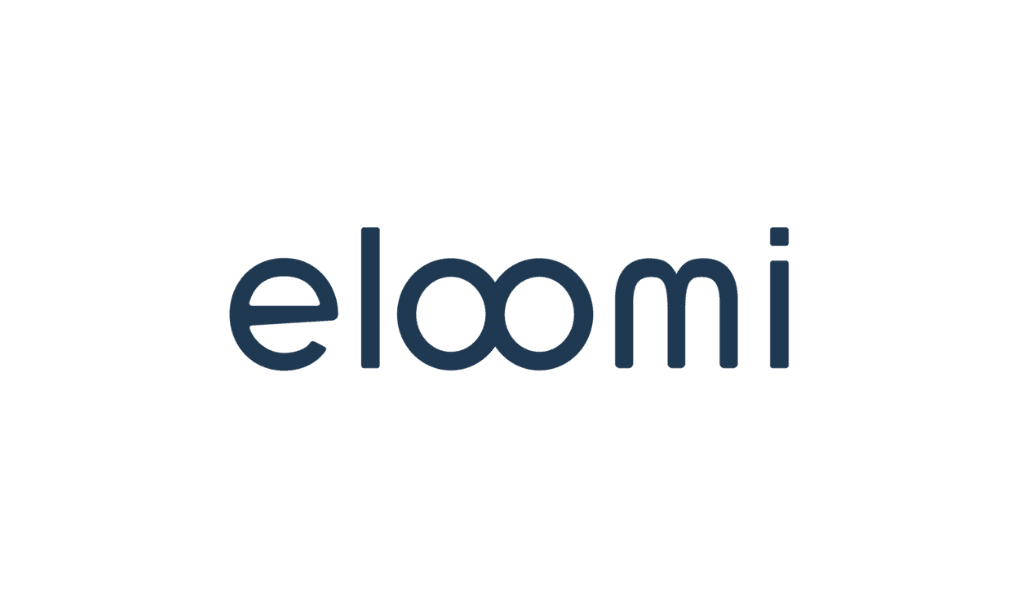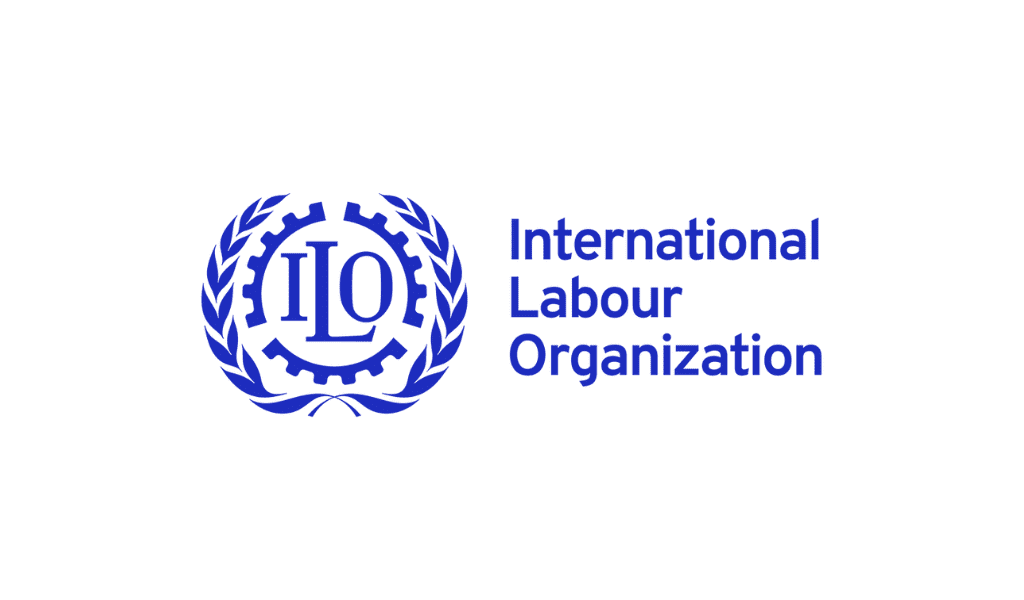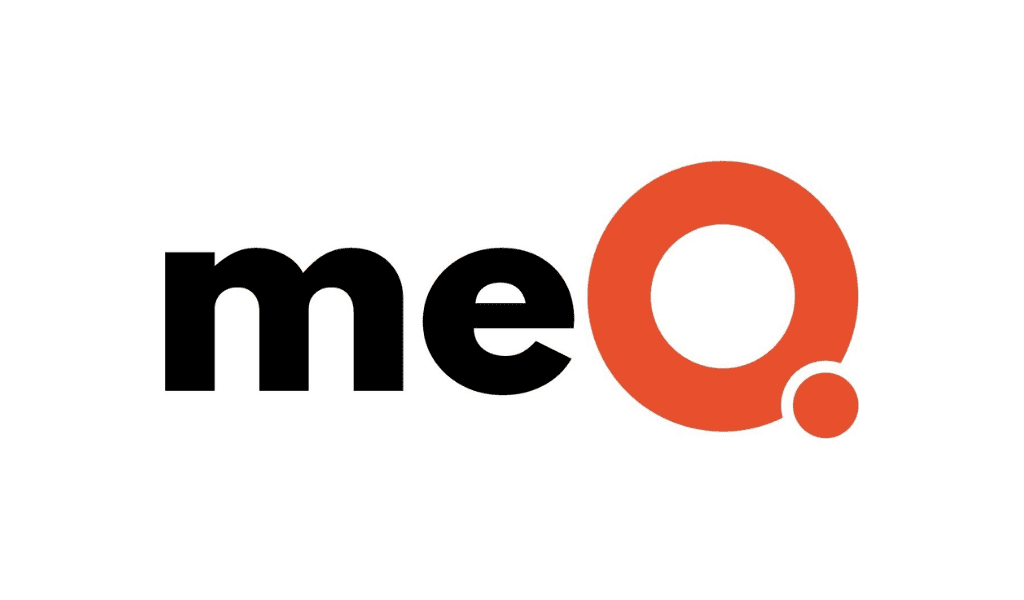View some of the top results of our recent research studies.
By Larry Basinait
The world of work is changing quickly, and the key to staying ahead is staying informed. From company culture to social media strategy and employer brand best practices, HRO Today research reports address the key questions on the minds of HR professionals. Here, we share some of the top findings –click here for the full version of the reports.
COST OF A BAD REPUTATION
Recruitment leaders worldwide agree that employer brand has a significant impact on hiring. With the U.S. unemployment rate at the lowest it has been in nearly 50 years, companies must be more cognizant than ever of the impact a bad reputation can have on their employer brand. This study, conducted by HRO Today and sponsored by Allegis Global Solutions, examined the effects of reputation on branding and recruitment efforts. Results found that talent is increasingly unwilling to consider an employment offer from companies with a damaged reputation, shrinking the candidate pool even further for those companies’ recruiters. While over one-half (54 percent) of employed workers were willing to leave their current employer to work with a company with a bad reputation, this was a 9 percent decrease from the prior year. In addition, employees required an average pay increase of 46 percent to make the transition.
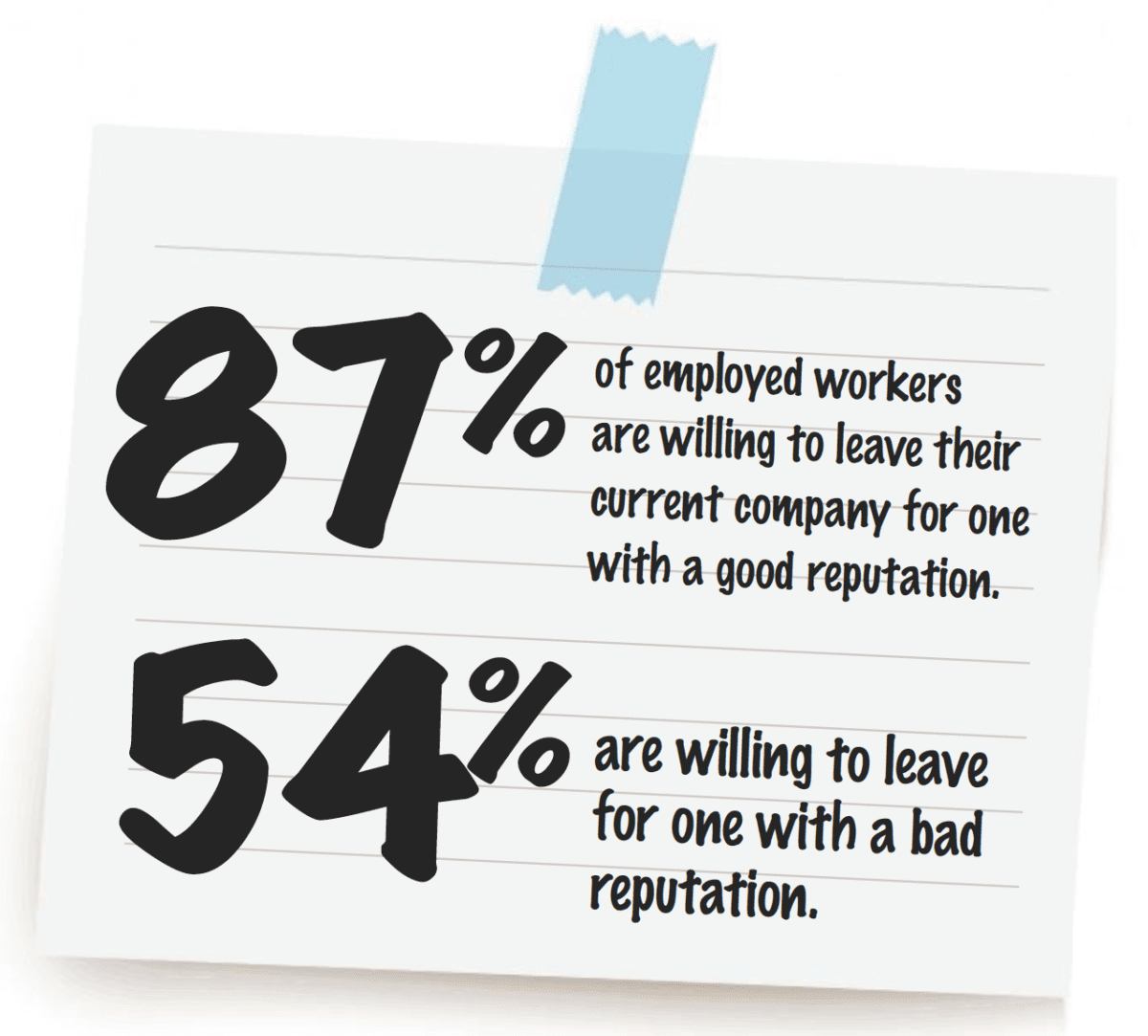 In contrast, a large majority (87 percent) of employed respondents reported that they would leave their current employer to work for a company with a good reputation. On average, employees would require a 37 percent pay increase to make the move, with just 24 percent requiring a pay increase of 50 percent or more.
In contrast, a large majority (87 percent) of employed respondents reported that they would leave their current employer to work for a company with a good reputation. On average, employees would require a 37 percent pay increase to make the move, with just 24 percent requiring a pay increase of 50 percent or more.
And a bad reputation doesn’t only affect talent acquisition, it can have an impact on retention. About 83 percent of employed respondents would look for a new job if their company was involved in a major scandal. Further, over one-half (53 percent) of those employed would start looking for a new job immediately, defined as less than 30 days.
Read more here.
TOTAL TALENT MANAGEMENT PRACTICES AND CHALLENGES
This report, sponsored by Broadleaf Results, examines the extent to which organizations have adopted a total talent management (TTM) model that encompasses the full spectrum of workers, from traditional permanent employees to temporary workers, independent contractors, and freelancers.
Results indicate that an integrated talent approach is not yet the norm, with just under one-half (42 percent) of participants saying they have not begun to align their disparate workforce models. Even the respondents who have begun executing a TTM model have a long way to go: Nearly every study respondent (97 percent) who has begun to implement a TTM model reported that their organization had not yet completed the transition.
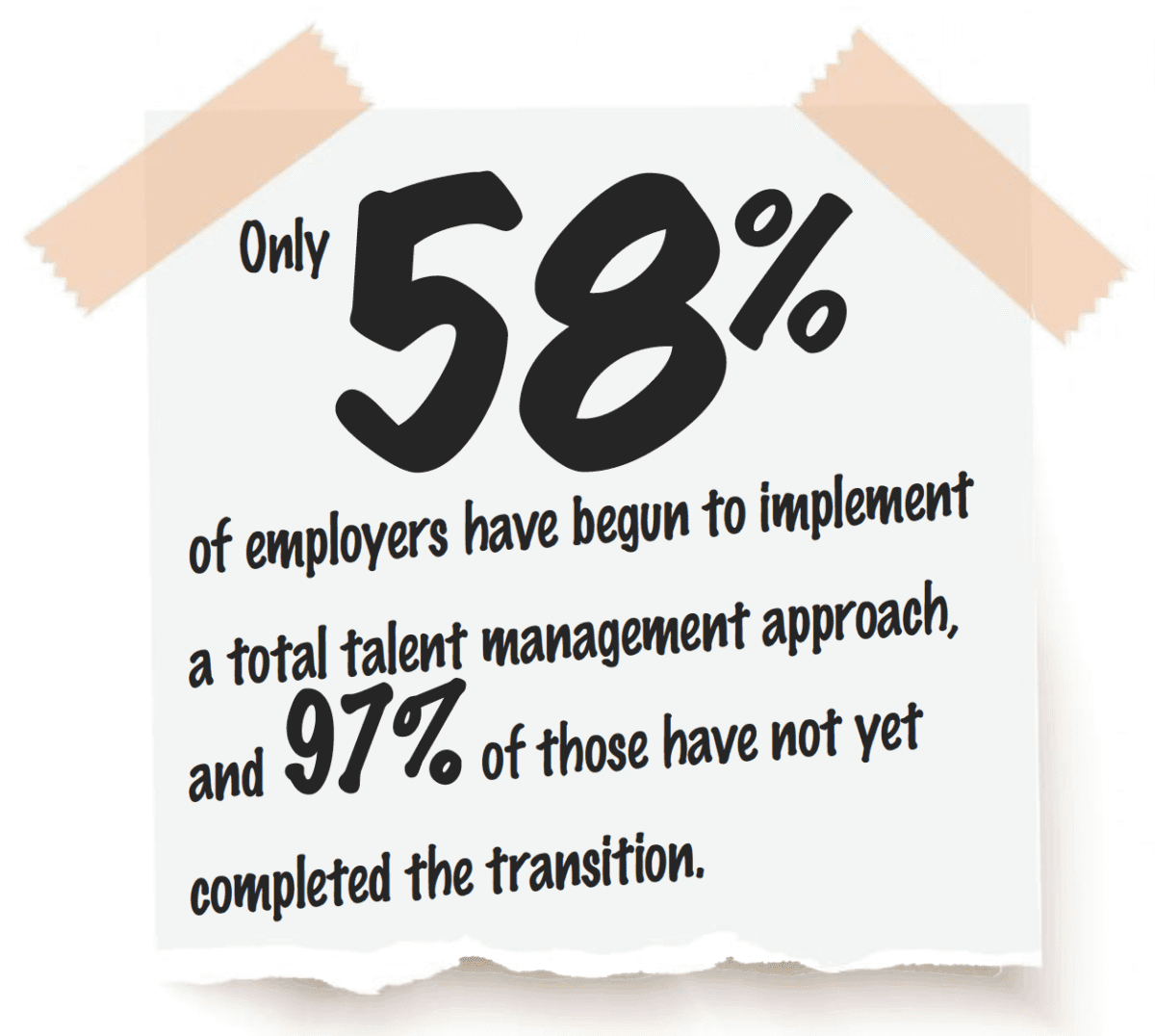 Why turn to a TTM model? The benefits of using contingent workers in addition to full-time talent include greater access to skill sets, increased flexibility, the possibility of shorter project durations, and cost savings. The majority (59 percent) of those who have begun moving toward total talent management did so in order to create a unified sourcing model for both contingent and direct applicants.
Why turn to a TTM model? The benefits of using contingent workers in addition to full-time talent include greater access to skill sets, increased flexibility, the possibility of shorter project durations, and cost savings. The majority (59 percent) of those who have begun moving toward total talent management did so in order to create a unified sourcing model for both contingent and direct applicants.
When asked how technology enabled them to better manage the contingent workforce, 82 percent of HR leaders said that technology is key to finding contingent workers, particularly valued for its ability to provide better visibility, track progress on projects, and maintain security.
Read more here.
HOW SOCIAL MEDIA IS USED TO BUILD EMPLOYER BRAND
As the world becomes increasingly digital, the importance of leveraging social media to build an employer brand is growing ever-important. This study, sponsored by Allegis Global Solutions, examines social media branding techniques, tools, and perceptions for the best results.
Social media paints an authentic and compelling picture of life inside a company. But beyond that, it helps companies increase the number of quality applicants they receive, reduce cost per hire, and differentiate themselves from competitors. When asked how important social media was to their employer brand strategy, the vast majority of HR leaders indicated they felt it was important (96 percent) or very important (71 percent).
Asked to indicate their goals for social media as it pertains to building their employer brand, HR leaders revealed four areas of focus:
- expanding the company’s reputation as a place to work (92 percent);
- promoting the company culture (83 percent);
- promoting job openings to active candidates (79 percent); and
- recruiting passive candidates (75 percent).
However, despite the overwhelming belief that social media is a vital element of an employer branding strategy, conviction as to its effectiveness is lacking. Only 54 percent of respondents indicated it was either effective or very effective in building their employer brand.
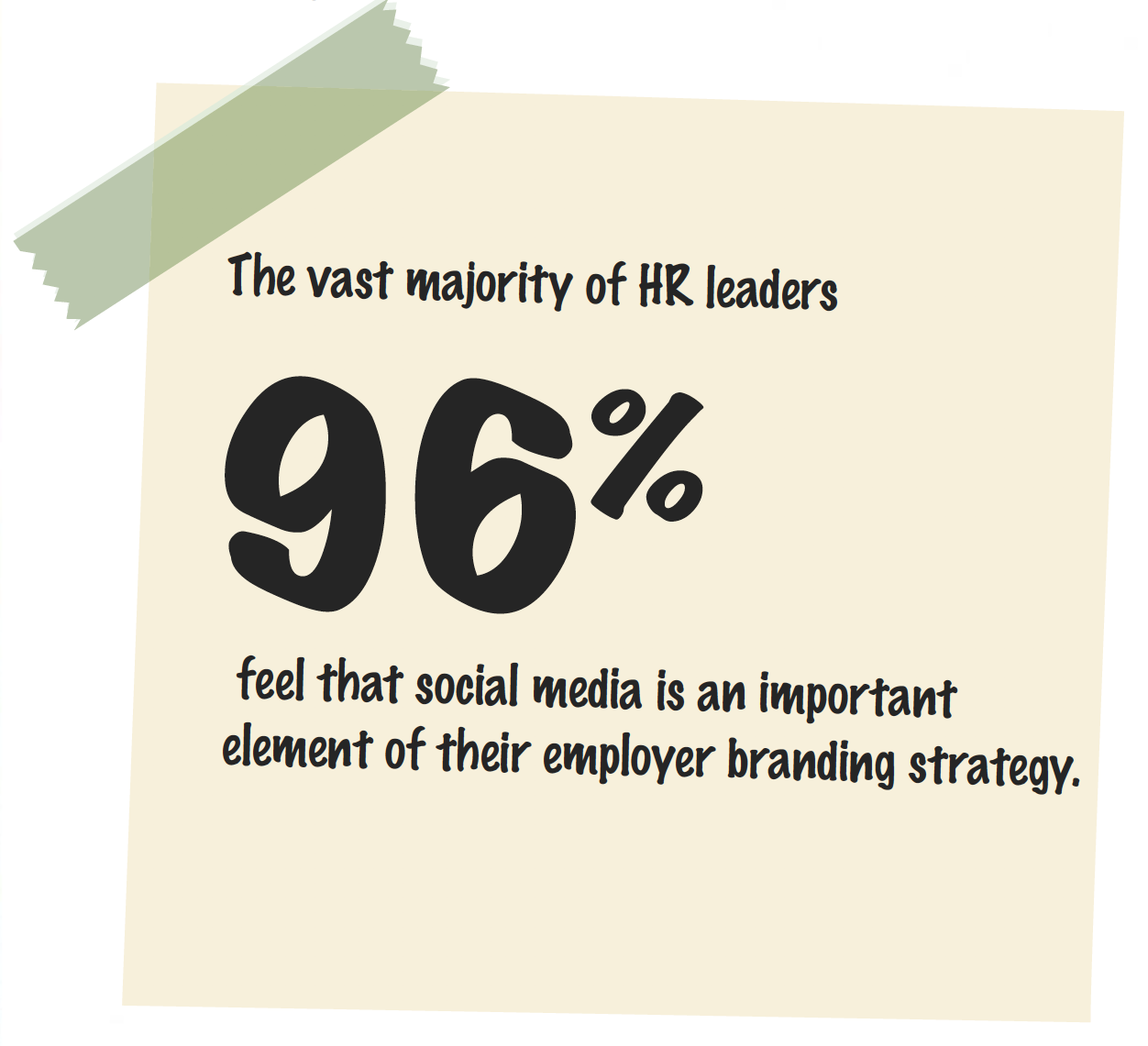 One way organizations can improve this outcome is by showcasing their current employees. This is already widely done by 80 percent of HR leaders, with over three-quarters (76 percent) using pictures of employees. It’s important to remember that social media isn’t just another job listing platform. Enlisting one’s staff means not just sharing the social media post, but more importantly, featuring and sharing the experiences of the advocates of the organization. And the best way to showcase employees is putting a face to the words and adding another layer of believability and personal connection through the use of employee pictures.
One way organizations can improve this outcome is by showcasing their current employees. This is already widely done by 80 percent of HR leaders, with over three-quarters (76 percent) using pictures of employees. It’s important to remember that social media isn’t just another job listing platform. Enlisting one’s staff means not just sharing the social media post, but more importantly, featuring and sharing the experiences of the advocates of the organization. And the best way to showcase employees is putting a face to the words and adding another layer of believability and personal connection through the use of employee pictures.
Another way an organization can credibly show how much it appreciates its employees is by sharing awards and recognition. Corporate events such as seminars, conferences, retreats, company milestones, and employee appreciation are also important to communicate when showcasing company culture, and over two-thirds (68 percent) use social media to promote these events.
Read more here.
MANAGING AND REPORTING INAPPROPRIATE WORKFORCE BEHAVIOR
HR departments are under more pressure than ever before when it comes to managing inappropriate workplace behavior. New social movements like #MeToo and a greater awareness of misconduct in the workplace have led to more employees reporting incidents and issues to their HR departments.
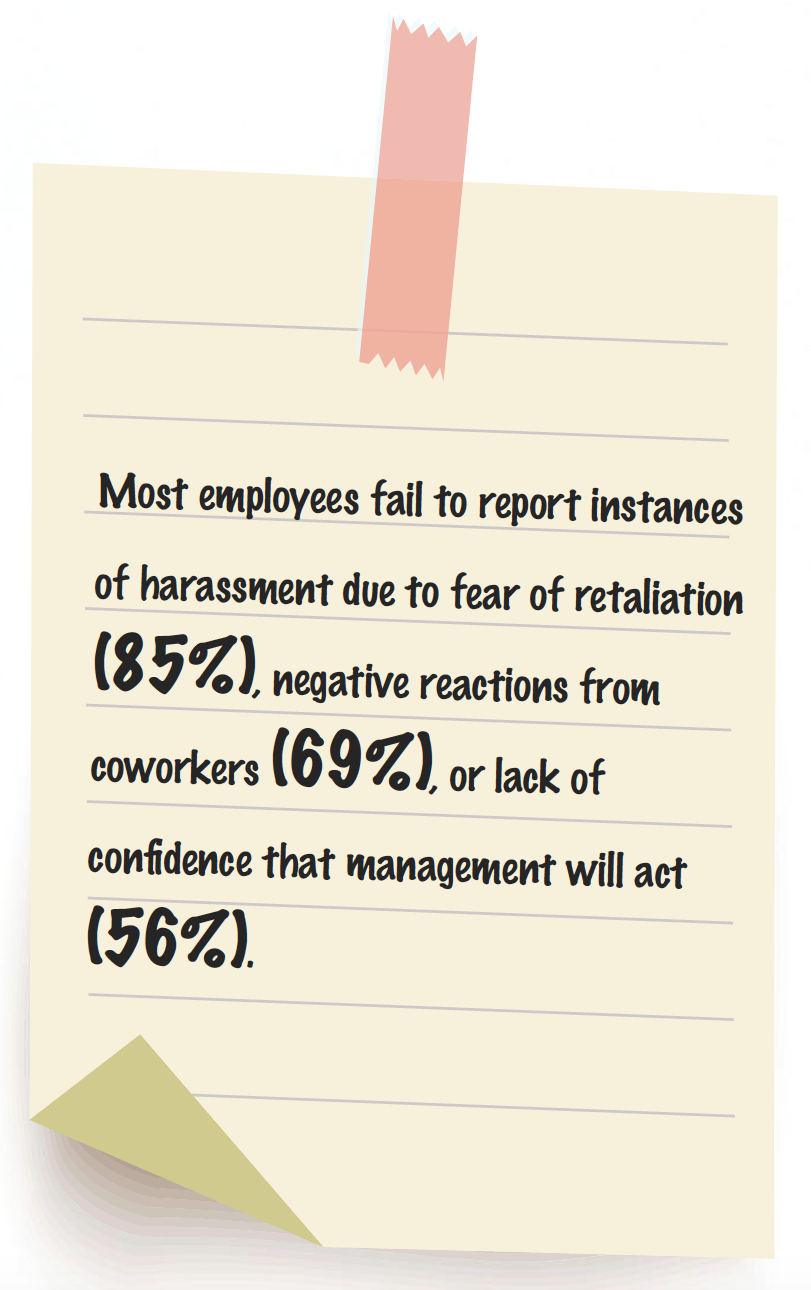 This study, sponsored by FirstVoice, examines the most commonly reported inappropriate workplace behaviors, preventative measures being taken, and the tools used to facilitate misconduct reporting.
This study, sponsored by FirstVoice, examines the most commonly reported inappropriate workplace behaviors, preventative measures being taken, and the tools used to facilitate misconduct reporting.
When asked to indicate which inappropriate workplace behaviors have been brought to their attention over the last 24 months, HR leaders revealed four common issues:
- sexual harassment (62 percent);
- personal harassment (60 percent);
- bullying (57 percent); and
- discriminatory harassment (56 percent).
In order to prevent these issues, HR typically maintains an open-door policy (97 percent) with the goal of encouraging openness and transparency between leadership and company employees. This is especially important given that inappropriate behavior is typically reported first to HR representatives (39 percent) or supervisors (23 percent).
Harassment training materials, cited by 90 percent of survey respondents, are also common and include both employee and manager training on recognizing, preventing, tracking, and documenting harassment, as well as the legalities and protections available to those reporting incidents. Mandatory harassment training was also a popular choice, offered by 89 percent of organizations.
Read more here.
YOU ARE WHAT THEY THINK: HOW COMPANIES INVEST AND MEASURE THE IMPACT OF EMPLOYER BRANDING
This report, sponsored by PeopleScout, examines how organizations measure the impact of their employer branding activities and the ways they invest in those brands. Results indicated that investing in the employer brand is a key business priority for most organizations, with 85 percent of HR leaders reporting that it was a high or moderate priority.
And branding efforts are not just limited to attracting candidates. Nearly nine-in-ten (85 percent) of study respondents stated that their branding strategy is part of a broad-based employee engagement initiative.
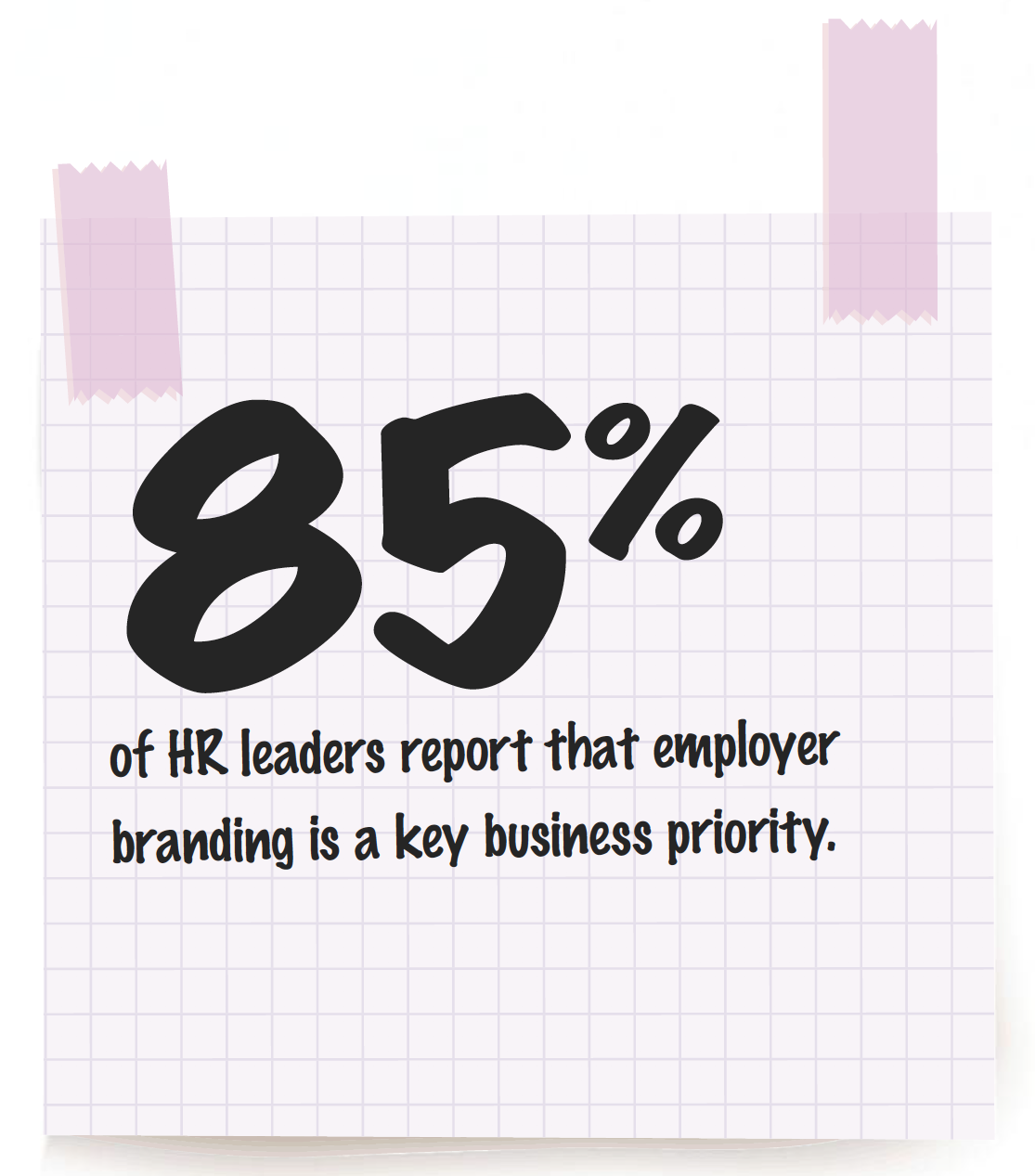 However, while HR leaders recognize that brand is important, most (87 percent) feel their employer brand does not completely distinguish their organization from others competing for the same talent. Companies are struggling to express exactly what makes their employer brand unique, despite knowing its importance.
However, while HR leaders recognize that brand is important, most (87 percent) feel their employer brand does not completely distinguish their organization from others competing for the same talent. Companies are struggling to express exactly what makes their employer brand unique, despite knowing its importance.
Part of the reason for the discrepancy may be that while most companies monitor traditional talent acquisition metrics like website traffic, quality of hire, and social engagement, only 20 percent are using those means to understand employer branding success. Less rigorous analysis of employer brand compared to the measurement of other areas of TA may result from lack of knowledge or understanding, but certainly undermines business results.
What distinguishes the best from the rest? Here are some best practices:
- Nearly three-quarters (71 percent) of top performers invest in a strategy to increase social media followers and the same amount expand their internal communications strategy to promote their employer brand.
- Organizations with strong brands are far more likely to encourage employees to take an active role as brand ambassadors.
- They measure the impact of employer branding activity, such as social engagement rates and quality of applicants.
- Not only have top-performing organizations increased the employer brand budget amount, but they have specific budget dollars allocated for it, though it’s usually a component of the talent attraction budget.
Read more here.

